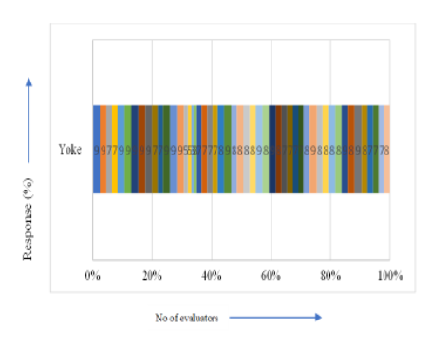


Indian Journal of Science and Technology
DOI: 10.17485/IJST/v17i21.3034
Year: 2024, Volume: 17, Issue: 21, Pages: 2128-2137
Original Article
Md. Eanamul Haque Nizam1,2*, Md. Moniruzzaman Rasel3, Darko Ujevic1, Ayub Nabi Khan4, Tarikul Islam5
1Faculty of Textile Technology, University of Zagreb, Zagreb, 10000, Croatia
2Department of Textile Engineering, Southeast University, Tejgaon, Dhaka, 1208, Bangladesh
3Department of Fashion studies, BGMEA University of Fashion and Technology, Turag, Dhaka, 1213, Bangladesh
4Pro-Vice Chancellor, BGMEA University of Fashion and Technology, Nishatnagor, Turag, Dhaka, 1213, Bangladesh
5Department of Textile Engineering, Jashore University of Textile Engineering, Jashore, 7408, Bangladesh
*Corresponding Author
Email: [email protected]
Received Date:28 November 2023, Accepted Date:16 March 2024, Published Date:20 May 2024
Background: The proportion of a garment to its body is known as garment fit. To ensure comfort between the human body and clothing, fit is very important. At present, 3D simulation of garment fit has great potential for business purposes. However, in previous analyses, there were expert opinions on manual fit analysis, which is very popular in the industry. Objectives: The main objectives of this research are to ensure manual clothing fits with a live model with 3D CLO software evaluation. Method: In this study, up to 50 textile experts from industries have chosen to analyze the analytical hierarchy process (AHP) to evaluate clothing fit. Findings: In this study, small, medium, and large-sized basic shirts and pants (20–25 years old) have been developed for live model fit evaluation. According to the analytical hierarchy process (AHP), among small, medium, and large-sized basic shirts and pants, one or two sizes of garments have been tested for garment fit evaluations. The results of these fit evaluations are satisfactory, according to 50 textile experts, and are the main output of the 3D CLO software. Novelty: The analytic Hierarchy Process (AHP) is fully adopted by the Bangladeshi newly developed size chart, which is enhanced by the 3D CLO software.
Keywords: Analytic Hierarchy Process (AHP), 3D CLO, Shirts, Pant, Garments, Bangladesh
© 2024 Nizam et al. This is an open-access article distributed under the terms of the Creative Commons Attribution License, which permits unrestricted use, distribution, and reproduction in any medium, provided the original author and source are credited. Published By Indian Society for Education and Environment (iSee)
Subscribe now for latest articles and news.